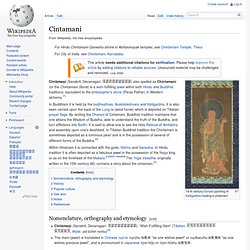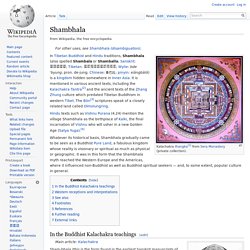

Michio Kaku. Kardashev scale. The Kardashev scale is a method of measuring a civilization's level of technological advancement, based on the amount of energy a civilization is able to utilize.

The scale has three designated categories called Type I, II, and III. A Type I civilization uses all available resources on its home planet, Type II harnesses all the energy of its star, and Type III of its galaxy. List of rampage killers. This is a partial list of rampage killings.

It is further divided into several subsections. This list shall contain every case with at least one of the following features: Rampage killings with six or more dead (excluding the perpetrator)Rampage killings with at least four people killed and a double digit number of victims (dead plus injured)Rampage killings with at least a dozen victims (dead plus injured) In the tables that follow, the "W" column indicates the weapon, or weapons, used.
Details are listed in the Annotation section. Africa and the Middle East[edit] Only the first 15 entries are shown here. This section contains cases that occurred in Africa and the Middle East. Americas[edit] Only the first 15 entries are shown here. This section contains cases that occurred in the Americas. Not included are school massacres, workplace killings, hate crimes or familicides, which form their own categories. Asia[edit] Only the first 15 entries are shown here. Europe[edit] List of serial killers before 1900. List of serial killers by number of victims. A serial killer is a person who murders two or more people, in two or more separate events over a period of time, for primarily psychological reasons.[1] There are gaps of time between the killings, which may range from a few hours to many years.

This list shows serial killers from the 20th century to present day by number of victims (list of serial killers before 1900). In many cases, the exact number of victims assigned to a serial killer is not known, and even if that person is convicted of a few, there can be the possibility that he/she killed many more. Due to the complex nature of serial killers, their crimes, discrepancies caused by geographic location and/or time, and the investigations related to these persons results in difficulties in organization and ranking. To address this, multiple categories have been provided in order to more accurately describe the nature of certain serial murders.
Gunfight at the O.K. Corral. Despite its name, the gunfight actually occurred in a narrow lot six doors west of the rear entrance to the O.K.

Corral on Fremont Street, and also in the street. The two opposing parties were initially only about 6 feet (1.8 m) apart. About thirty shots were fired in thirty seconds. Ike Clanton filed murder charges against the Earps and Doc Holliday but they were eventually exonerated by a local judge after a 30-day preliminary hearing and then again by a local grand jury. On December 28, 1881, Virgil Earp was maimed in a murder attempt by the outlaw Cowboys, and on March 18, 1882, they murdered Morgan Earp. Shell game. The shell game (also known as Thimblerig, Three shells and a pea, the old army game) is portrayed as a gambling game, but in reality, when a wager for money is made, it is a confidence trick used to perpetrate fraud.

In confidence trick slang, this swindle is referred to as a short-con because it is quick and easy to pull off. Play[edit] R'lyeh. The location of R'Lyeh given by Lovecraft was 47°9′S 126°43′W in the southern Pacific Ocean.

August Derleth placed it at 49°51′S 128°34′W. Both locations are close to the Pacific pole of inaccessibility or "Nemo" point, 48°52.6′S 123°23.6′W, a point in the ocean farthest from any land mass. The nightmare corpse-city of R'lyeh…was built in measureless eons behind history by the vast, loathsome shapes that seeped down from the dark stars. There lay great Cthulhu and his hordes, hidden in green slimy vaults. R'lyeh is characterized by bizarre architecture likened to non-Euclidean geometry. Cintamani. Cintāmaṇi (Sanskrit; Devanagari: चिन्तामणि) also spelled as Chintamani (or the Chintamani Stone) is a wish-fulfilling jewel within both Hindu and Buddhist traditions, equivalent to the philosopher's stone (Paras Pathar) in Western alchemy.[1] In Buddhism it is held by the bodhisattvas, Avalokiteshvara and Ksitigarbha.

Shambhala. In Tibetan Buddhist and Hindu traditions, Shambhala (also spelled Shambala or Shamballa; Sanskrit: शंभाल; Tibetan: བདེ་འབྱུང་; Wylie: bde 'byung, pron. de-jung; Chinese: 香巴拉; pinyin: xiāngbālā) is a kingdom hidden somewhere in Inner Asia.

It is mentioned in various ancient texts, including the Kalachakra Tantra[2] and the ancient texts of the Zhang Zhung culture which predated Tibetan Buddhism in western Tibet. The Bön[3] scriptures speak of a closely related land called Olmolungring. Hindu texts such as Vishnu Purana (4.24) mention the village Shambhala as the birthplace of Kalki, the final incarnation of Vishnu who will usher in a new Golden Age (Satya Yuga).[4] Whatever its historical basis, Shambhala gradually came to be seen as a Buddhist Pure Land, a fabulous kingdom whose reality is visionary or spiritual as much as physical or geographic. Shangri-La.